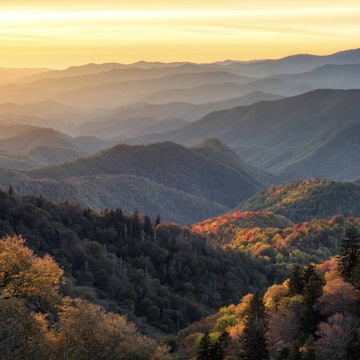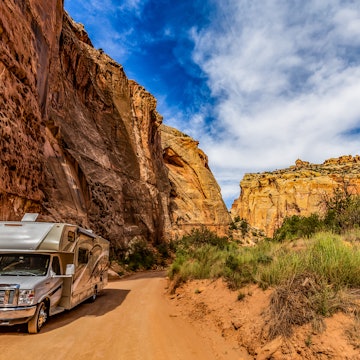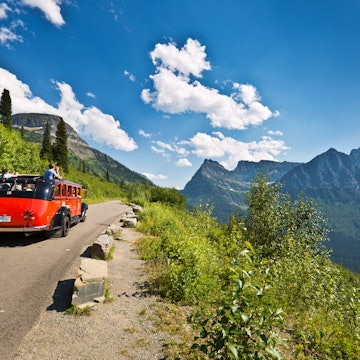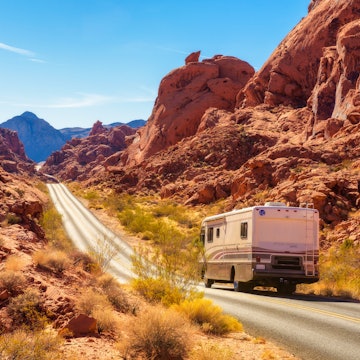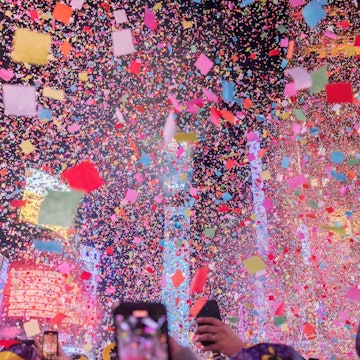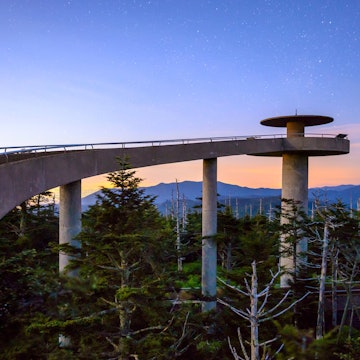

© Pierre Jean Durieu / Shutterstock
Though textbooks and films like The Last of the Mohicans tend to frame Native American stories in the past tense, a resounding refrain resonates throughout US Indian Country: "We're still here."
There are more than 560 federally recognized tribes across the United States, and although Native Americans were often forced by the government to leave their homes for reservations in other states and territories, Indigenous communities have roots in every corner of the country. In addition to visiting Native-owned hotels, resorts and cultural centers on Indigenous land, there are numerous ways to learn more about Native American heritage, from millennia past to the present day.
Indigenous Peoples' Day, for example, has gained momentum as an alternative to Columbus Day, while the Friday after American Thanksgiving was designated National Native American Heritage Day by the US Congress in 2008. Both honor the achievements and contributions of America’s first inhabitants and acknowledge the genocide and displacement they faced after contact with European colonizers.
Year-round, you can visit sites under the National Park Service where glimpses of pre-contact life for Indigenous peoples have been preserved. And then there are museums and other institutions all over the country which offer visitors a chance to engage with historic and contemporary Native American art, history, culture and even cuisine. These are some of the best you can visit, from the East Coast to the west.
Editor's note: During COVID-19, be sure to follow local travel guidance and beware that some places may be closed.

Navajo Nation, Southwest, USA
Navajo Code Talkers relayed coded messages for US Marines during World War II in Navajo, a language so complex that the Japanese never deciphered the communications. Their daring exploits come to life in Tuba City, Arizona at the Explore Navajo Interactive Museum, which also shares the tribe’s spiritual traditions. Tuba City is within the Navajo Nation, which is the largest reservation in the country, covering parts of Arizona, Utah and New Mexico.
Home to the Diné, as tribal members prefer to be called, this stark high-desert landscape holds buttes, mesas and canyons. It also hides a rich, often tragic, history – be respectful when you visit and don't take pictures of anyone. To the northeast, Navajo National Monument showcases two well-preserved cliff dwellings built by Ancestral Puebloans. Navajo guides lead visitors through the stunning Canyon de Chelly and cinematic Monument Valley. Stay at The View Hotel for unbeatable views of the latter's sandstone spires.

The National Museum of the American Indian in Washington, DC
Step into a Comanche tipi, dig into buffalo chili slathered on fry bread and read a copy of the Horse Creek Treaty to learn the backstory of the proposed Dakota Access pipeline. Tribal traditions and history are an interactive experience at this four-story Smithsonian Museum, which opened on the National Mall in 2004. Its collection is impressive, but it’s the immersive adventures – especially for kids – that make it most memorable.
The award-winning Nation to Nation: Treaties Between the United States and American Indian Nations, for example, packs a punch as it spotlights the numerous treaties that underlie America’s modern landholdings. After exploring, try native dishes – with the occasional modern spin – at lauded Mitsitam Native Foods Café. Each station represents a different region of the United States and uses endemic ingredients that area tribes have incorporated into their cuisines.
22 free things to do in Washington, DC

The Heard Museum in Phoenix, Arizona
The Heard Museum is well known for its celebration of Native American art and culture, with a focus on tribes of the Southwest. Arts & crafts exhibits feature pottery, rugs and a mesmerizing collection of Hopi katsina dolls, called tithu in Hopi. Some of the most memorable art pieces have a contemporary twist, like the eye-catching bowl giving a nod to the Harry Potter books. Buy your own artwork in the well-curated gift shop, and grab a bite to eat at the James Beard–acknowledged Fry Bread House afterward – it's just three miles away.
One of the most powerful exhibits at the Heard is Away from Home: American Indian Boarding School Stories exhibit examines the federal policy, which began in the late 1800s, of forcibly removing Native American children from their homes and sending them to faraway boarding schools in an attempt to stamp out Native culture and impose the English language and Christian religion in its place. Oral histories and other records reveal how deeply traumatizing this practice was, and how it continues to impact Indigenous communities today.

Mesa Verde National Park, Colorado
In the far southwestern corner of what is now Colorado, Mesa Verde National Park remains a stunning example of the Ancestral Puebloans' elaborate cliff dwellings. It was continuously occupied from roughly 7500 BCE until 1300 CE, when a prolonged drought likely drove inhabitants from the area. In the 1700s, Spanish colonizers stumbled across Mesa Verde and gave it its present name, but it wasn't until the late 1800s that a movement to preserve the Cliff Palace and other structures took hold, and in 1906 President Theodore Roosevelt established Mesa Verde National Park in part to prevent any more of the pottery and other artifacts there from being removed by private collectors, opportunists and to foreign museums.
Today, visitors can still scramble up and down the ladders that connect the various cliff dwellings, hike area trails to get better views of this unique landscape and learn more about the people who lived here at the Chapin Mesa Archeological Museum. Tent and RV sites are available at Morefield Campground, just four miles inside Mesa Verde, while Far View Lodge offers beautifully appointed hotel accommodations nearby.
Finding Indigenous America in US national parks

The Museum of the Cherokee Indian in Cherokee, North Carolina
Tucked in the verdant foothills of the Great Smoky Mountains of western North Carolina, this informative museum tells the story of the Cherokee, who have lived in the region since the last ice age. The museum shares artifacts and history from across the centuries, with a compelling exhibit examining the Trail of Tears. During this mass exodus, which began in 1838, President Andrew Jackson forced more than 16,000 Cherokee to leave their southeastern homelands and march to the Indian territory, now Oklahoma. Between 4000 and 8000 people died. Local descendants of those who escaped or returned are part of the Eastern Band of Cherokee.

Chaco Culture National Historic Park, New Mexico
Another ancient city that was home to thousands between 850 and 1250 CE, Chaco Culture National Historic Park is one of the largest pre-Columbian historical sites in the United States. Here the ancestors of today's Hopi and Pueblo peoples built huge houses and deep ceremonial chambers called kivas from sandstone blocks and massive timber oriented according to astronomical observations. Today, the night sky is still stunningly visible, and Chaco is designated as an official International Dark Sky Park.
Although this city was abandoned by 1300 CE like Mesa Verde due to climate change, the descendants of Chaco Canyon's residents still remember their time there, and the diaspora's migration out, in oral histories passed down over the last nearly eight hundred years. As with any other Native American site you visit, be respectful and Leave No Trace – these places are still considered sacred to the tribes who once called them home.
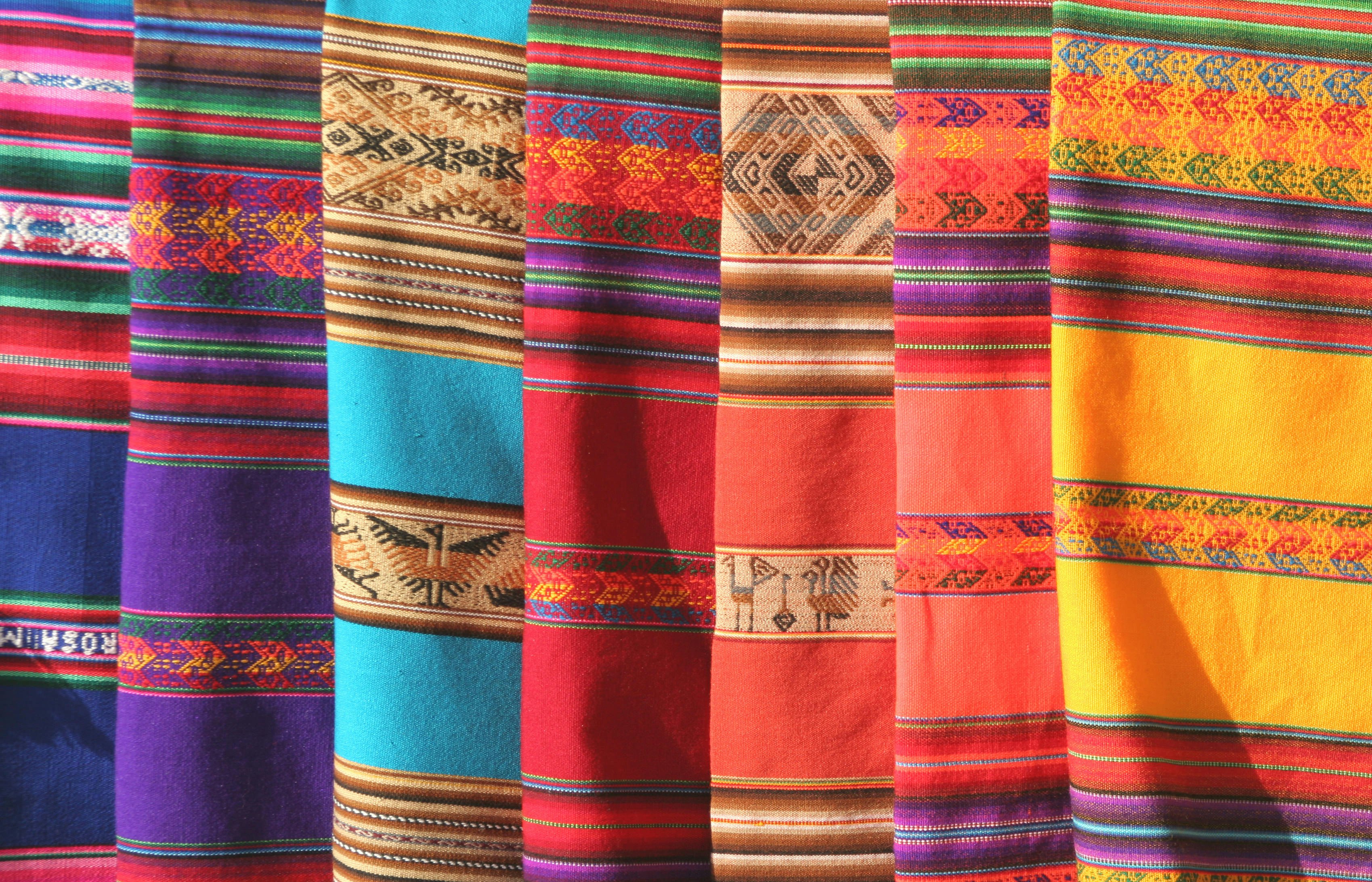
Santa Fe, New Mexico
Looking for a wide range of Native American art? Head to Santa Fe. Once the terminus of the Santa Fe Trail, the city today sits between 19 Native American pueblos. Each of these adobe villages is a distinct tribal nation, many with rich artistic traditions. Beyond the pueblos, Puebloan Indians also sell crafts beneath the portales fronting the Palace of the Governors beside the downtown Plaza.
For cutting-edge work, visit the nearby Museum of Contemporary Native American Arts. Atop Museum Hill, two miles from the Plaza, the Museum of Indian Arts & Culture examines the traditions of Southwestern tribes while the Wheelwright Museum of the American Indian features contemporary and historic artwork. Both have fantastic gift shops. For a list of galleries selling Native American art, visit here. The Santa Fe Indian Market, with more than 1000 artists, is held in mid-August.

The Gilcrease Museum in Tulsa, Oklahoma
One thing the United States government didn't count on when it forcibly relocated Native American tribes to Oklahoma was that those displaced people would strike it rich after oil was discovered under their newly minted lands. That had dark consequences for some like the Osage, who experienced a startling number of suspicious deaths as their wealth grew – a mystery that was investigated by the recently formed Federal Bureau of Investigations, and is well-recounted in the excellent Killers of the Flower Moon by David Grann.
Others, however, made it out unscathed and were able to use their fortunes for philanthropic good. Thomas Gilcrease was one such oilman – a member of the Muscogee Creek Nation, who in the 1940s started a foundation to begin collecting southwestern art, including works by indigenous artists. Today, that collection of some 12,000 pieces resides in Gilcrease's former mansion near downtown Tulsa, and exhibitions range from ancient artifacts to contemporary paintings like those by Frank Buffalo Hyde which blend traditional imagery with street art techniques.
You might also like:
8 places to honor Native American heritage in the US
11 Indigenous-owned hotels in the US and Canada
Indigenous cuisine revitalization: best places to sample traditional foods









